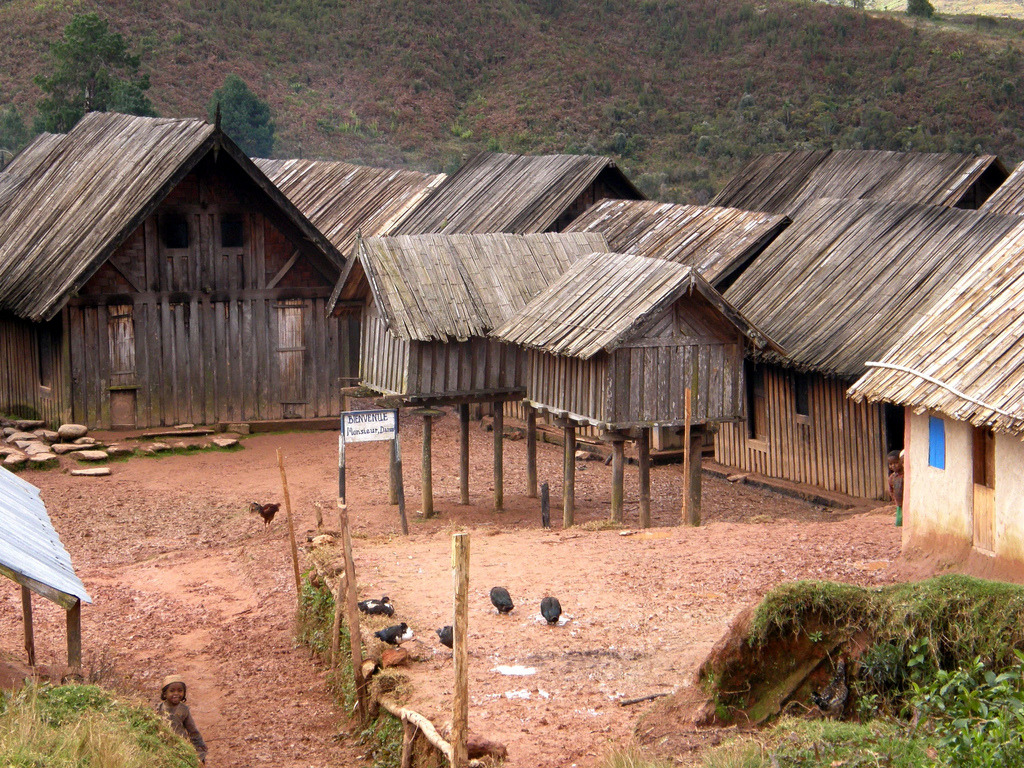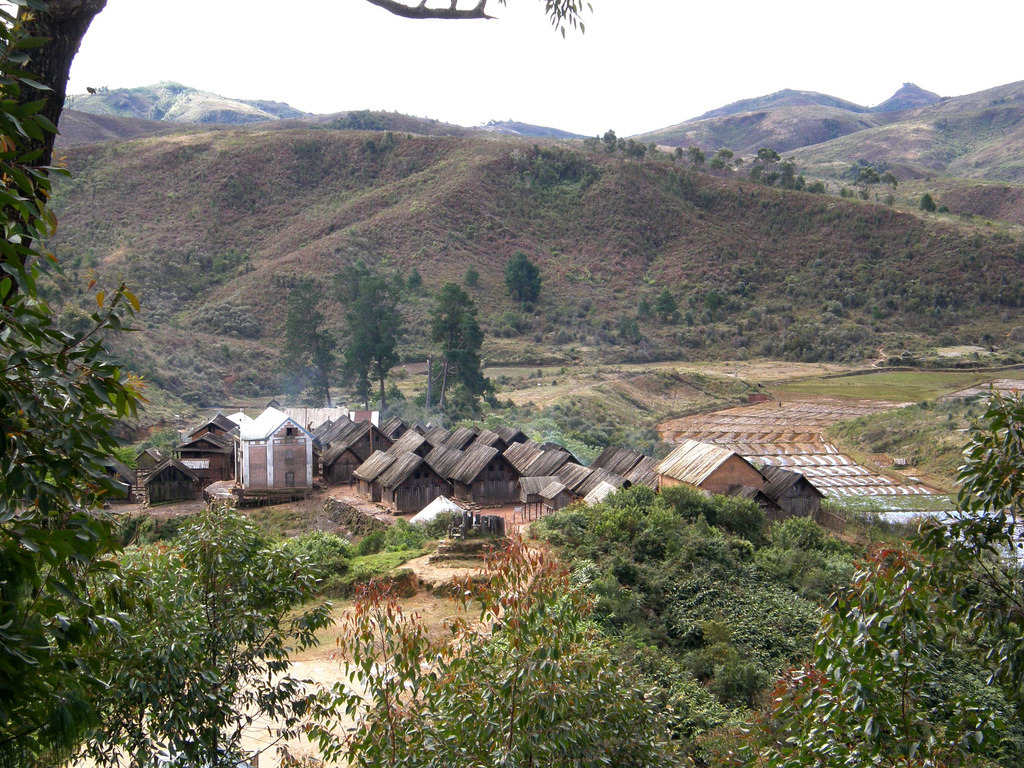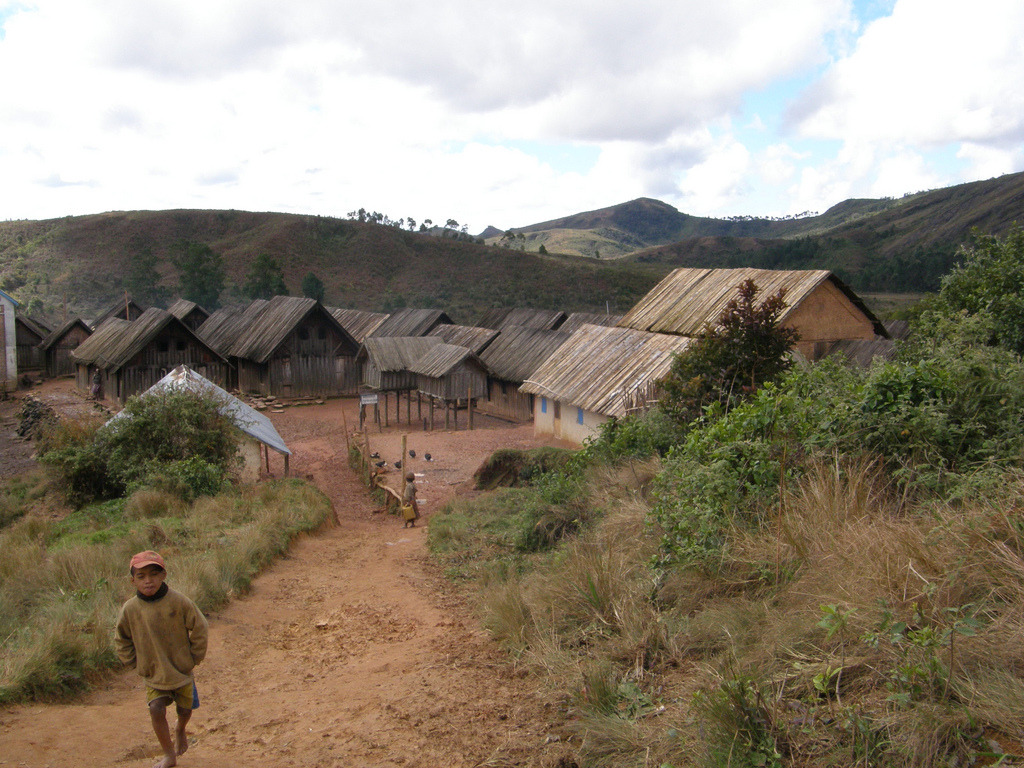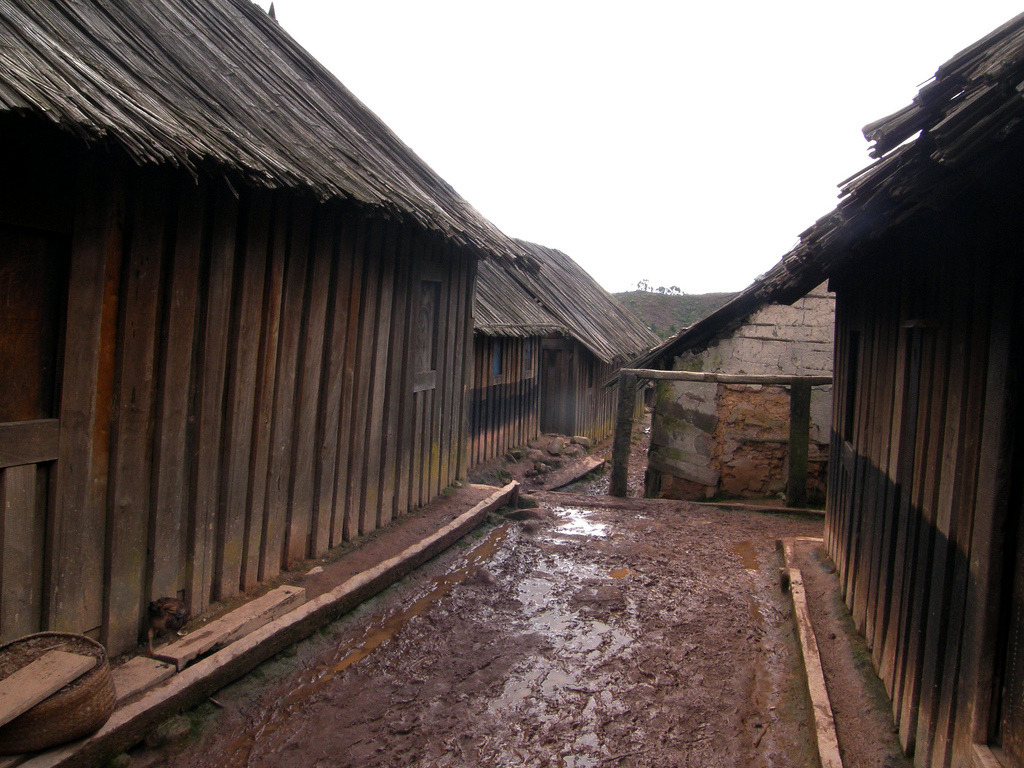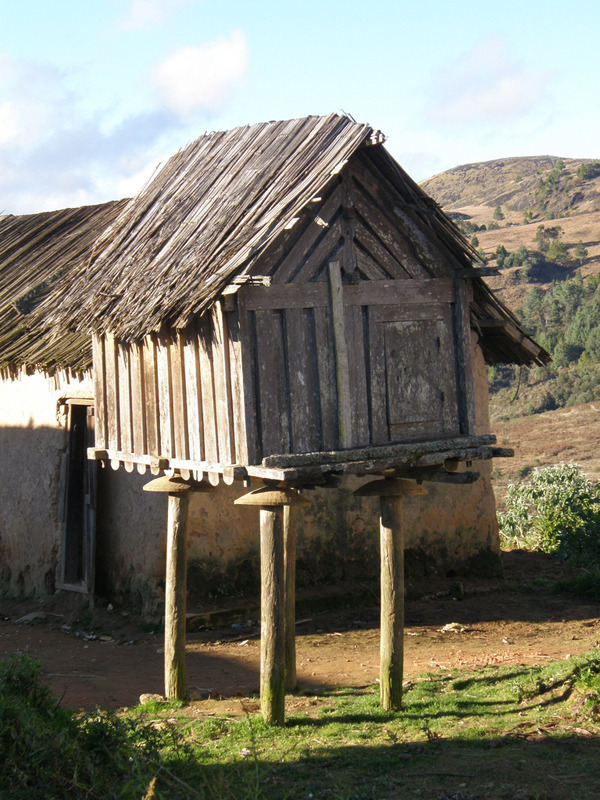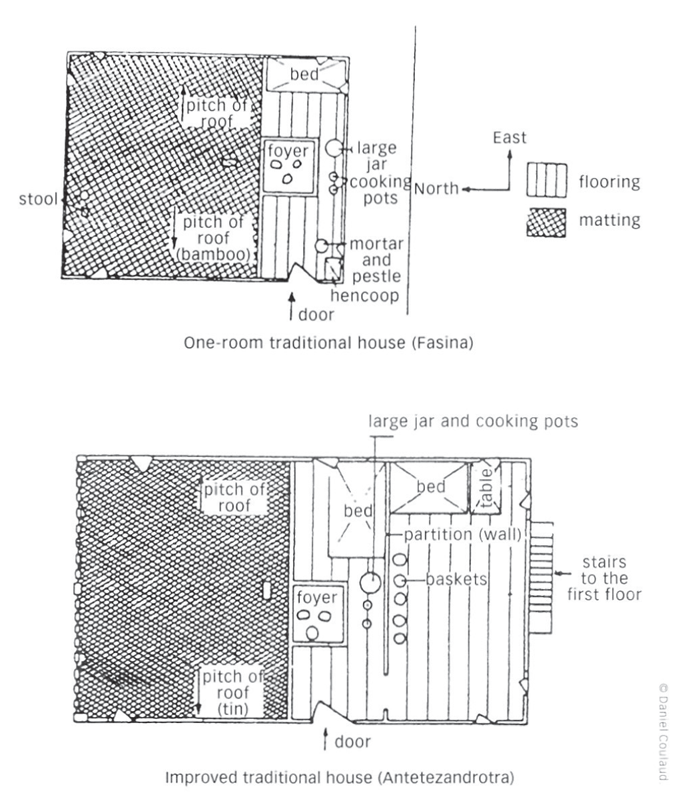V 23 |
Zafimaniry wooden houses |
type |
|
place |
|
population |
The Zafimaniry tribes live secluded among the 1000m high mountains in the centre of Madagascar. Their small villages of between 5 and 70 houses are connected by narrow earth tracks, although even the broadest of these roads are often impassable for trucks due to torrential rains. In such circumstances the way of life of the natives has scarcely changed for centuries: every year they clear and burn part of the forest, cultivate beans and corn on the land gained and use the timber to build houses for themselves and store for their crops.
A level surface is needed to build the wooden houses which are customary here, so they are usually built on plateaus, minor unevenness is dealt with by raising the houses on short plinths. The single family houses with a 4×5 metre base are always built with a North-South orientation, and their interior arrangements are also fixed: the northern part is “sacred” while the south is “profane” and they are divided by a central pillar. The wooden-floored southern part houses a fireplace and is where kitchenware and mortars are stored. In the south-eastern corner there is a bed and a chicken coop in the south-western corner. The northern, rush floored part is used to receive guests.
The beams of the houses are made of rosewood joined together by tongue and groove joints, without the use of any nails or other connectors. The roof is covered with flattened bamboo canes, which are also woven together to make parts of the walls, providing well ventilated division of space. The zafimaniry houses are famous for their intricately carved wooden shutters and doors, but close up it can be seen that the apparently smooth surface of every beam is covered in fine, geometric decorative patterns. The granaries, which are raised on legs are similarly decorated.
The lives of the Zafimaniry tribes changed dramatically in the 1960s with the appearance of doctors. Improvements in hygiene led to a three-fold increase in their population, and slash and burn agriculture was no longer enough to feed them and provide them with wood for building. The villagers are trying to cash in on their expertise in wood carving by making decorative objects for tourists.
